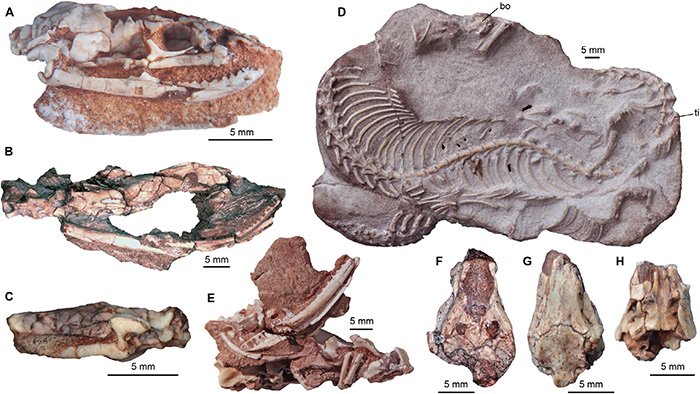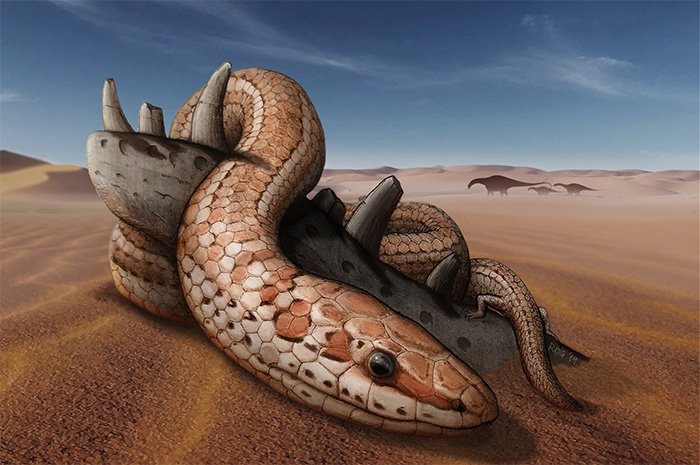Snakes are unusual animals. There's the whole legless thing, for starters. Depending on your own perspective, their sinuous slither is a big part of what you either love or fear about these creatures.
Then there's their method of eating. Snakes have mobile jaws that can dislocate and stretch to incredible widths — this allows them to swallow large prey whole.
Any time we encounter species like this, one question towers above all of the others. How?
How — and from what species — did these animals evolve to be like this? Well now, thanks to a 95 million-year-old fossil discovered in Argentina, we're a little closer to knowing.
Meet Najash rionegrina (say nuh-JAHSH REE-ohn-GREE-nah), an ancient snake with legs!
Tiny hind limbs
You would think that with a fossil of a snake with legs that the only place to begin would be with those legs.
And to be sure, they're pretty odd — they were a pair of tiny hind legs near the tail that made the forearms of a T. rex look like gorilla arms! Najash probably would not have got much use out of them, making it easy to see why snakes evolved without them. But while the legs are interesting, the real story of this fossil is its head.
Ahead of the game

A collection of the Najash fossils that were discovered. The top left skull is what gave researchers the biggest insights into snake evolution. (Flinders University)
The researchers behind this discovery found a few fossils of Najash in the same area. But the key fossil was a nearly perfectly-preserved skull. An ancient snake skull that looked somewhere between a lizard and a modern snake.
Najash's jaws were definitely more mobile than those of a lizard or of the dinosaurs that roamed the Earth with it. But it didn't yet have the ultra-mobile jaws of a python or viper. In short, this was essentially a very weird lizard. Snake-like, yes. But not yet there.
Bigger ancestor
Before this discovery, the main theory behind snake evolution was that their family tree came from a group of tiny, blind, burrowing snakes. Modern scolecophidians — which are the size of a nickel — are the best example of these.
The fossil of Najash helps to prove that the ancestors of modern snakes could've been animals much more like the animals we know today. Which, of course, leads to another question: Is a snake with legs a lizard or a snake?
It's going to take more research to figure that one out!
 "I must confess, my legs don't help me all that much!" An artist's impression of Najash rionegrina. (Raúl O. Gómez, Universidad de Buenos Aires, Buenos Aires, Argentina)
"I must confess, my legs don't help me all that much!" An artist's impression of Najash rionegrina. (Raúl O. Gómez, Universidad de Buenos Aires, Buenos Aires, Argentina)










cool